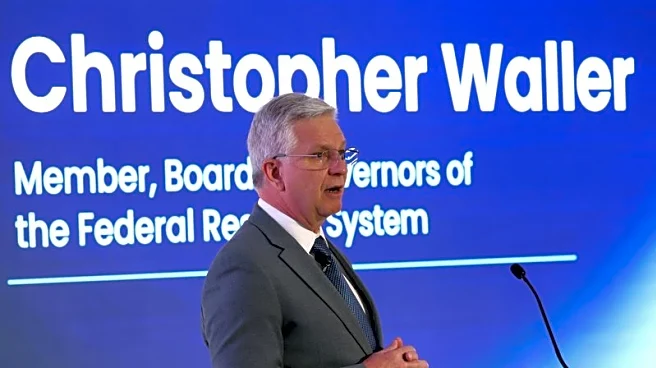What's Happening?
Federal Reserve Governors Stephen Miran and Christopher Waller have presented conflicting views on the pace of interest rate cuts needed to address labor market weaknesses and geopolitical tensions. Miran is advocating for a half-point cut, citing recent
U.S.-China tensions as justification for aggressive easing. Waller supports a quarter-point reduction, which aligns more closely with the consensus within the Federal Open Market Committee (FOMC). Both governors are considering the mixed signals from the labor market, with Waller focusing on reconciling solid GDP data with labor market softening.
Why It's Important?
The differing opinions among Fed governors underscore the complexity of monetary policy decisions in the current economic climate. The choice between aggressive and moderate rate cuts will have significant implications for economic growth, inflation, and market stability. Businesses, consumers, and investors are all affected by these decisions, as interest rates influence borrowing costs, investment returns, and overall economic activity. The ongoing trade tensions and geopolitical uncertainties further complicate the Fed's policy considerations.
What's Next?
The FOMC meeting scheduled for October 28-29 will be a critical event for determining the Fed's monetary policy direction. Stakeholders will be closely watching the Fed's decision and subsequent economic indicators, which could influence market confidence and economic forecasts. The Fed's approach to handling trade tensions and labor market signals will be pivotal in shaping future policy decisions.














